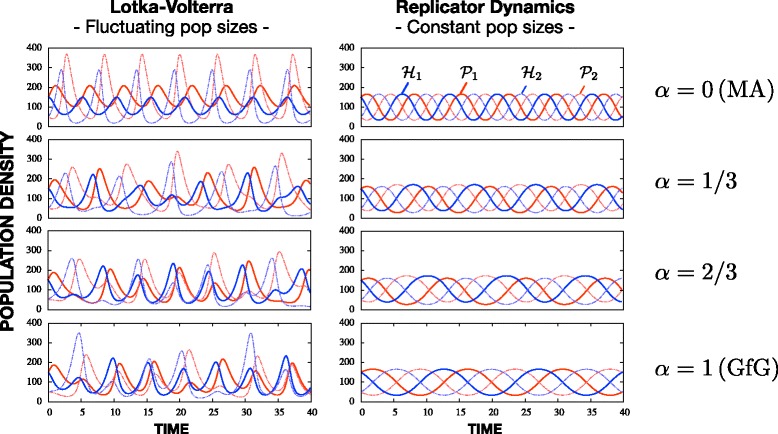Fig. 2.

Example of population dynamics based on the Lotka-Volterra equations (left) and the Replicator Dynamics (right). While the dynamics on the right side resembles the common Red Queen pattern, the left side is more complex. In a pure matching-allele model (top), the plot on the left shows two independent sets of Lotka-Volterra dynamics, one for and (blue and red solid lines, correspondingly) and a second one for and (blue and red dotted lines). As the model deviates from MA model with increasing α (rows 2–4) more complicated dynamics arise, since the four population densities of , , , and are coupled (parameters γ=0.005, κ=0.5, and σ=0.01 for both Lotka-Volterra and Replicator Dynamics. Host birth rate b h=1.5 and parasite death rate d p=1.0 in the Lotka-Volterra case. Initial population densities h 1=p 1=150, h 2=p 2=50)
